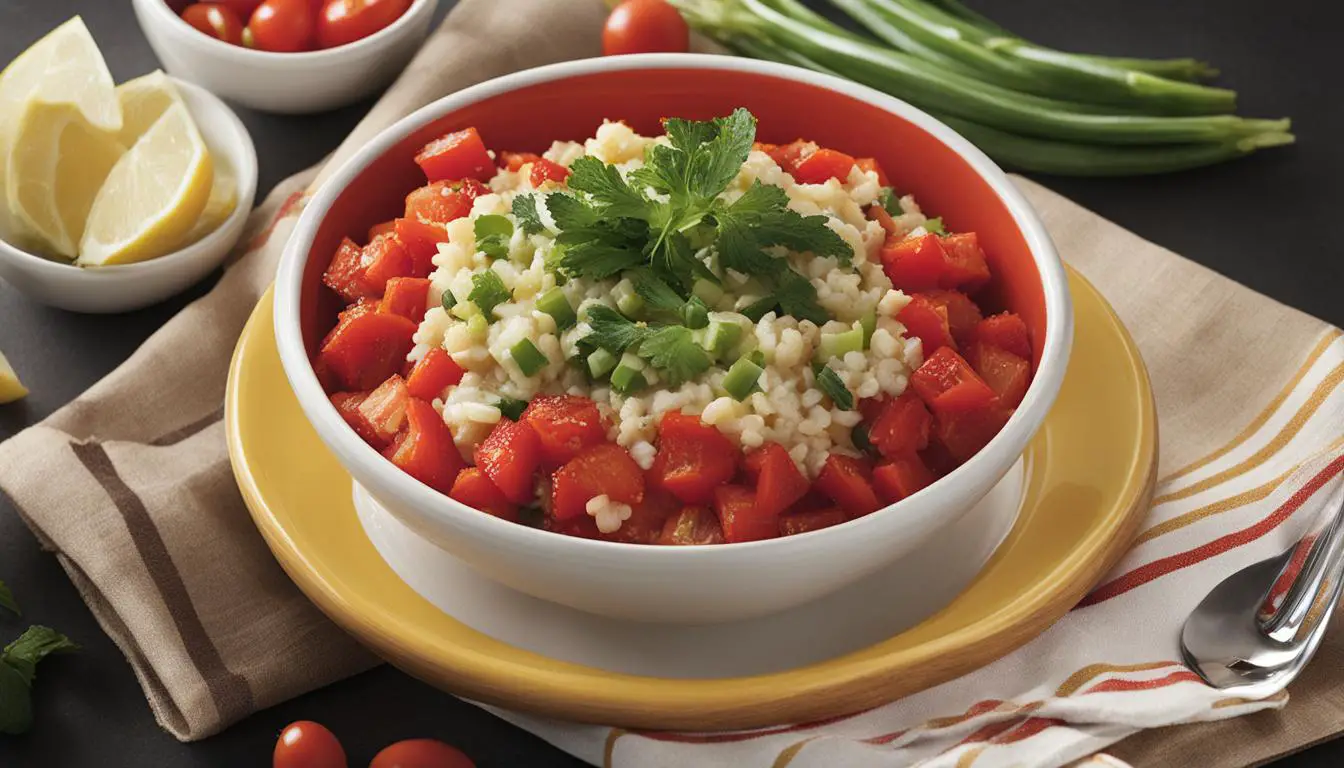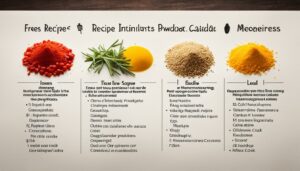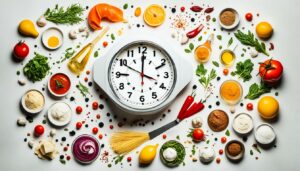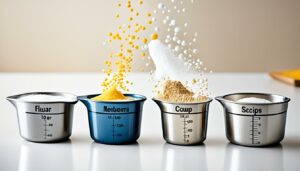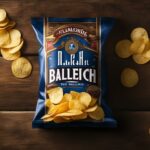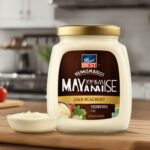Have you ever tried to follow a recipe only to find yourself confused and frustrated by the instructions? Creating a well-written recipe may seem simple, but it takes more than just listing the ingredients and their quantities. A well-crafted recipe should provide clear and concise instructions, accurate measurements, a well-structured format, and much more.
In this section, we will explore the essential components of a well-written recipe. By understanding these components, you’ll be able to create delicious and foolproof dishes with ease.
Contents
- 1 Clear and Concise Instructions
- 2 Accurate Measurements
- 3 Well-Structured Format
- 4 Thorough Ingredient List
- 5 Helpful Tips and Variations
- 6 Appetizing Descriptions
- 7 Dietary Considerations
- 8 Visual Elements
- 9 Conclusion
- 10 FAQ
- 10.1 What are the essential components of a well-written recipe?
- 10.2 Why are clear and concise instructions important in a recipe?
- 10.3 How important are accurate measurements in a recipe?
- 10.4 How does a well-structured format enhance a recipe?
- 10.5 Why is a thorough ingredient list important in a recipe?
- 10.6 How do helpful tips and variations elevate a recipe?
- 10.7 Why are appetizing descriptions included in a recipe?
- 10.8 Why is it important to address dietary considerations in a recipe?
- 10.9 How do visual elements enhance a recipe?
- 10.10 What makes a recipe well-written?
Key Takeaways:
- A well-written recipe is essential for creating delicious and foolproof dishes.
- The components of a well-written recipe include clear and concise instructions, accurate measurements, a well-structured format, a thorough ingredient list, helpful tips and variations, appetizing descriptions, dietary considerations, visual elements, and more.
- By incorporating these essential components, you can create recipes that are easy to follow and result in satisfying culinary experiences.
Clear and Concise Instructions
When it comes to creating a well-written recipe, clear and concise instructions are essential. Providing step-by-step guidance on how to prepare the dish ensures the reader can easily follow along. Here are some tips to help you write effective recipe instructions:
- Use straightforward language: Avoid using complicated terms or jargon that may confuse the reader. Instead, use simple language that is easy to understand.
- Break it down: Divide the instructions into small, manageable steps. This will make the recipe less intimidating and help the reader avoid confusion.
- Be specific: Clearly state the required cooking time, temperature, and any other critical details. Avoid vague language like “cook until done” as it leaves too much room for interpretation.
In addition to the text-based instructions, including visual aids such as photos or videos can further enhance the reader’s understanding of the recipe. For example:
Images provide a visual reference for the final dish and can help the reader understand the preparation process. By following these tips, you can write recipe instructions that are clear, concise, and easy to follow.
Accurate Measurements

Accurate measurements are crucial for any recipe, whether you’re a professional chef or a home cook. Adding too much or too little of an ingredient can drastically alter the taste and texture of a dish, making it either inedible or unappetizing. That’s why providing precise measurements in a recipe is vital to ensure that your dishes turn out consistently delicious every time.
| Ingredient | Weight (in ounces) | Volume (in cups) |
|---|---|---|
| Flour | 4.5 | 1 |
| Sugar | 8 | 1 |
| Butter | 4 | 0.5 |
| Milk | N/A | 2 |
As shown in the table above, measurements can be presented either by weight or volume, depending on the ingredient. Liquid ingredients are generally measured by volume (in cups), while dry ingredients are measured by weight (in ounces). Providing measurements in both weight and volume can also be helpful for those who use different measuring tools.
Tip:
When measuring flour, use a spoon to scoop the flour into a measuring cup, and then level off the top with a knife. Avoid scooping the flour directly with the measuring cup, as it can result in too much flour and affect the recipe’s outcome.
Measuring with Precision
Using the right measuring tools can also help ensure accurate measurements. Here are some basic measuring tools that every home cook should have:
- Measuring cups and spoons: For measuring dry and liquid ingredients accurately.
- Kitchen scale: For measuring ingredients by weight, especially essential for baking.
- Measuring jug: For measuring liquids
By providing precise and consistent measurements in your recipe, you can help your readers achieve the desired flavor, texture, and overall outcome of the dish.
Well-Structured Format
A well-structured recipe format is essential for ensuring that the reader can easily follow the instructions and that all necessary information is accessible.
The format should include clear headings and subheadings that help guide the reader through the different stages of the recipe. Clear bullet points can also be used to separate the different steps and make the recipe easier to scan and navigate.
It’s important to keep in mind that the format of a recipe can vary depending on the target audience. For example, a recipe for beginners might require more detailed explanations and illustrations, whereas a recipe for experienced cooks can be more concise and include fewer details.
Example Recipe Format for Beginner Cooks:
| Section | Content |
|---|---|
| Ingredients |
|
| Instructions |
|
| Tips |
|
As shown in the example table, a structured format can help organize the recipe and make it easy to follow. By following a well-structured recipe format, you can ensure that your readers have a positive experience and that your dishes turn out delicious every time.
Thorough Ingredient List

A well-written recipe must have a thorough ingredient list that specifies all the items required to prepare the dish. Including the precise quantities of each ingredient ensures consistent results every time the recipe is followed.
For instance, for a classic Margherita pizza, the ingredient list must include:
| Ingredients | Quantity |
|---|---|
| Flour | 1 1/2 cups |
| Yeast | 1 tsp |
| Sugar | 1/2 tsp |
| Salt | 1/2 tsp |
| Olive oil | 2 tbsp |
| Water | 1/2 cup |
| Tomato Sauce | 1/2 cup |
| Fresh Mozzarella | 8 oz |
| Fresh Basil | 4-5 leaves |
This list is comprehensive, with accurate quantities, but it can also be adapted for different preferences and dietary needs. For instance, you could substitute the flour for gluten-free flour or the fresh mozzarella for vegan cheese.
A well-written ingredient list also specifies any equipment required, such as a food processor or stand mixer. Adding this information helps ensure that the reader has everything required to execute the recipe successfully.
Helpful Tips and Variations
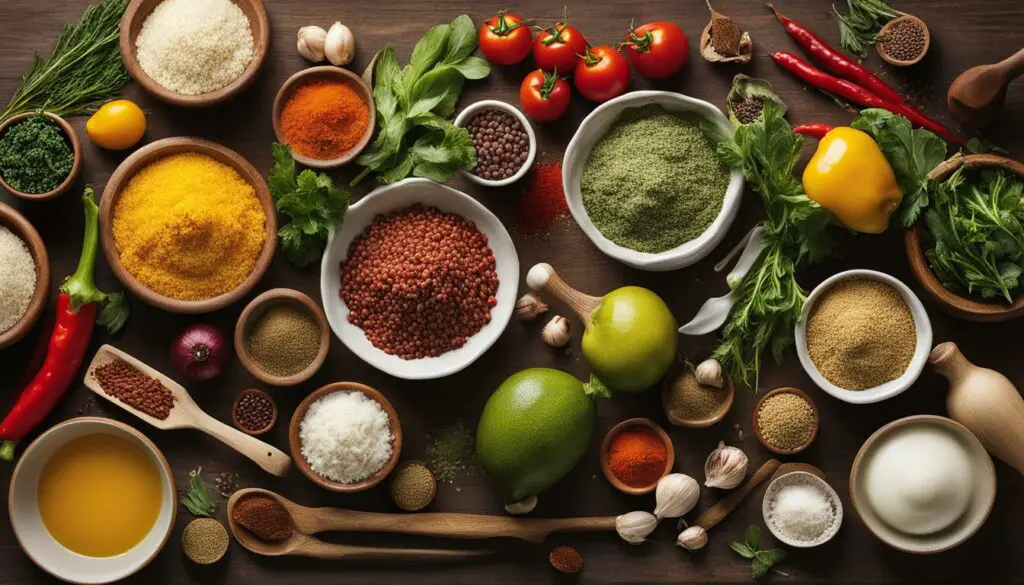
When it comes to creating a well-written recipe, including helpful tips and variations can be a game-changer. Here are some tips and variations to take your recipes to the next level.
Ingredient Substitutions
One of the most valuable tips to offer readers is ingredient substitutions. Whether they have dietary restrictions or are missing a specific ingredient, substitutions can help ensure the recipe’s success. For instance, if you’re making a recipe that calls for buttermilk, you can substitute it with a mixture of milk and lemon juice or vinegar. If someone is trying to cut down on dairy, you can suggest alternatives like soy milk or almond milk. Remember to clarify the exact measurement for the substitution and how it may affect the recipe’s outcome.
Cooking Techniques
Another helpful tip is to include cooking techniques that can make a difference in the final dish. For example, if you’re making a stir-fry, you can suggest cutting the ingredients into uniform sizes to ensure even cooking. If the recipe involves baking, you can recommend using a specific type of oven rack to create a desired texture or using a water bath to prevent cracking. Don’t underestimate the impact that a small detail can have on the final outcome.
Flavor Variations
Variations can take a recipe from good to great. Offering readers the ability to customize the dish to their preferences can make the recipe particularly appealing. For instance, if you’re sharing a pasta recipe, you can suggest various sauces to accompany it, like alfredo, marinara, or pesto. You can also suggest adding different protein sources like chicken, fish, or tofu. Don’t be afraid to get creative and provide a variety of options.
Note: Keep in mind that while variations can be exciting, it’s important to provide clear instructions for each suggested variation. Make sure to specify the exact measurements, cooking times, and techniques to ensure the dish’s success.
Incorporating helpful tips and variations into your recipe can make all the difference in its success. Don’t be afraid to get creative and offer suggestions to add your personal touch.
Appetizing Descriptions

A well-written recipe not only provides clear instructions, but it also entices the reader with appetizing descriptions. Describing the flavors, textures, and aromas of the finished dish can make the reader’s mouth water and inspire them to try the recipe.
“This velvety smooth chocolate mousse is a chocolate lover’s dream come true. Each spoonful will melt in your mouth, leaving behind a rich and decadent flavor that will satisfy your sweet tooth.”
As seen in the example above, a recipe description should be specific and vivid, painting a picture of the dish’s sensory experience. Use descriptive words such as “juicy,” “crispy,” or “flaky” to evoke the texture of the dish, and mention the aroma and flavors, such as “smoky,” “spicy,” or “herbaceous,” to highlight the taste of the dish.
An appealing image alongside the description can also enhance the reader’s desire to try the recipe. For instance, including an image of a mouth-watering chocolate cake can make the reader crave it and want to give the recipe a try.
By including an appetizing description, you can not only provide instructions on how to prepare a dish but also entice the reader to try it out for themselves.
Dietary Considerations
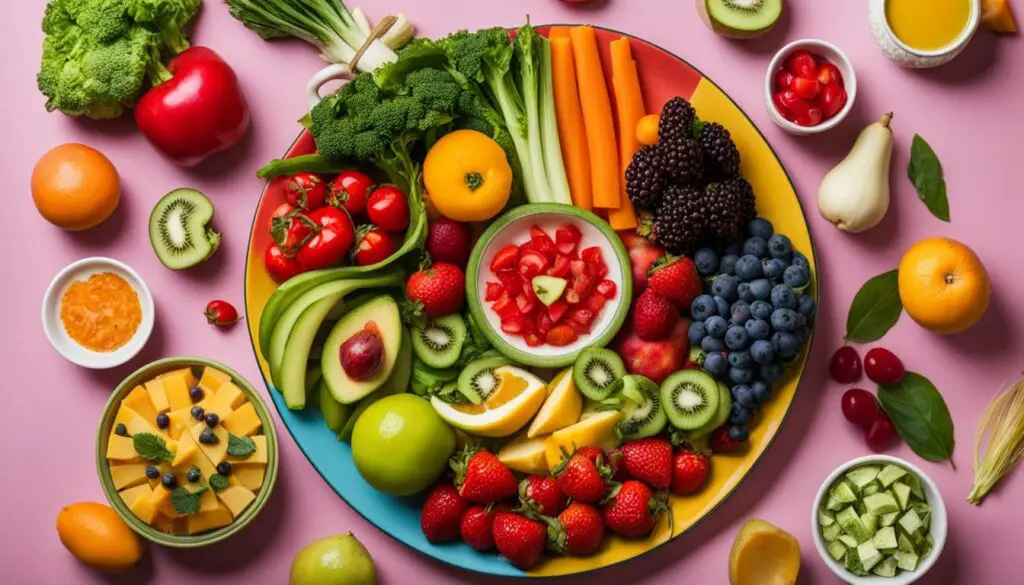
Addressing dietary considerations is critical in creating an inclusive and accessible recipe. By providing modifications and alternatives, individuals with specific dietary needs can enjoy the dish without compromising their preferences or health requirements.
For example, vegan and vegetarian diets exclude animal products like meat, poultry, fish, dairy, and eggs. To make a recipe vegan-friendly, dairy and egg substitutes, such as plant-based milk, tofu, or flaxseed, can be used instead.
Individuals with gluten intolerance or celiac disease cannot consume gluten, a protein found in grains like wheat, barley, and rye. To make a recipe gluten-free, alternative flours like rice flour, almond flour, or coconut flour can be used instead of wheat flour.
| Dietary Need | Ingredient Alternative |
|---|---|
| Vegan | Plant-based milk, tofu, flaxseed |
| Gluten-free | Rice flour, almond flour, coconut flour |
| Low-sodium | Herbs, spices, vinegar, citrus juice |
Low-sodium diets restrict the intake of salt and sodium, which can increase blood pressure and put individuals at risk of heart disease. To make a recipe low-sodium, using herbs, spices, vinegar, or citrus juice instead of salt can add flavor without the added sodium.
It’s essential to consider dietary needs when creating recipes to ensure that everyone can enjoy the dish. By incorporating dietary considerations, you can make delicious and inclusive meals that cater to a wide range of preferences and requirements.
Visual Elements
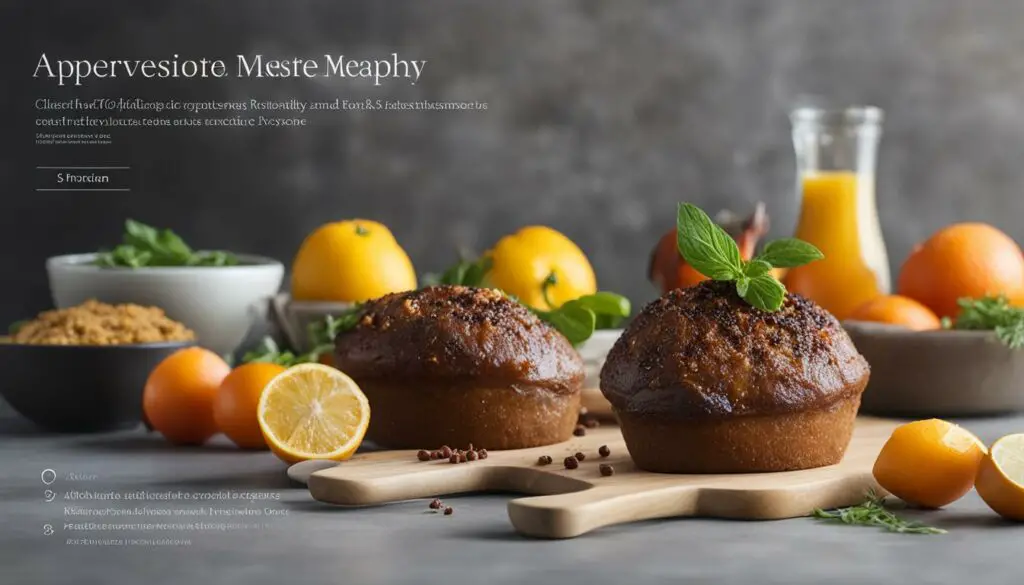
Visual elements are an integral part of a well-written recipe. Including high-quality images of the final dish and step-by-step photos can enhance the reader’s understanding and help them envision the cooking process. Videos can also be a valuable addition, providing a more dynamic and engaging experience. Incorporating visual aids can strengthen the recipe’s appeal and increase the likelihood of success when attempting to recreate the dish.
It’s essential to ensure that the visual elements are clear and well-lit, with accurate colors and textures that accurately represent the final dish. Closely cropping the image to highlight the dish’s details can also be effective.
element should contain the SEO relevant keyword, such as “well-written recipe visual elements,” to enhance the recipe’s discoverability and accessibility to visually impaired individuals who use screen readers.
By incorporating visual elements into a recipe, the reader can better understand the dish and engage with the cooking process, resulting in a more enjoyable and successful culinary experience.
Conclusion
Writing a well-written recipe is an art that requires attention to detail and careful consideration of various essential components. A recipe that lacks any of these components may lead to disastrous or unsatisfactory results.
Remember to provide clear and concise instructions, accurate measurements, a well-structured format, a thorough ingredient list, helpful tips and variations, appetizing descriptions, dietary considerations, and visual elements to create a culinary masterpiece.
By following these guidelines, you can ensure that your recipe stands out and leaves a lasting impression on the reader. Writing a well-written recipe takes time and patience, but the result is worth the effort: a delicious and foolproof dish that everyone will enjoy!
So, start writing your well-written recipe today and watch your culinary skills flourish!
FAQ
What are the essential components of a well-written recipe?
The essential components of a well-written recipe include clear and concise instructions, accurate measurements, a well-structured format, a thorough ingredient list, helpful tips and variations, appetizing descriptions, dietary considerations, and visual elements.
Why are clear and concise instructions important in a recipe?
Clear and concise instructions ensure that the reader can easily follow along and understand the preparation process, resulting in a successful dish.
How important are accurate measurements in a recipe?
Accurate measurements are crucial for consistent results. Including precise amounts for ingredients helps maintain the desired flavors and textures in the dish.
How does a well-structured format enhance a recipe?
A well-structured format with clear headings, subheadings, and bullet points improves readability and makes the recipe easy to navigate, ensuring that all necessary information is readily accessible.
Why is a thorough ingredient list important in a recipe?
A thorough ingredient list, including specific quantities and potential substitutions, helps the reader gather all the necessary ingredients for the dish and ensures successful preparation.
How do helpful tips and variations elevate a recipe?
Helpful tips provide additional guidance, such as ingredient substitutions or cooking techniques, while variations offer options to customize the dish according to individual preferences, making the recipe more versatile and appealing.
Why are appetizing descriptions included in a recipe?
Appetizing descriptions that describe the flavors, textures, and aromas of the finished dish create anticipation and make the cooking experience more enjoyable for the reader.
Why is it important to address dietary considerations in a recipe?
Addressing dietary considerations, such as vegan, gluten-free, or low-sodium options, ensures that individuals with specific dietary needs can still enjoy the dish without compromising their preferences or health requirements.
How do visual elements enhance a recipe?
Incorporating visual elements, such as high-quality images or videos, provides a visual reference for the final dish and assists the reader in understanding the preparation process, making the recipe more enticing and accessible.
What makes a recipe well-written?
A well-written recipe encompasses all the essential components, including clear instructions, accurate measurements, a well-structured format, a thorough ingredient list, helpful tips and variations, appetizing descriptions, dietary considerations, and visual elements. Considering these components ensures that the recipe is easy to follow and results in delicious culinary experiences.

